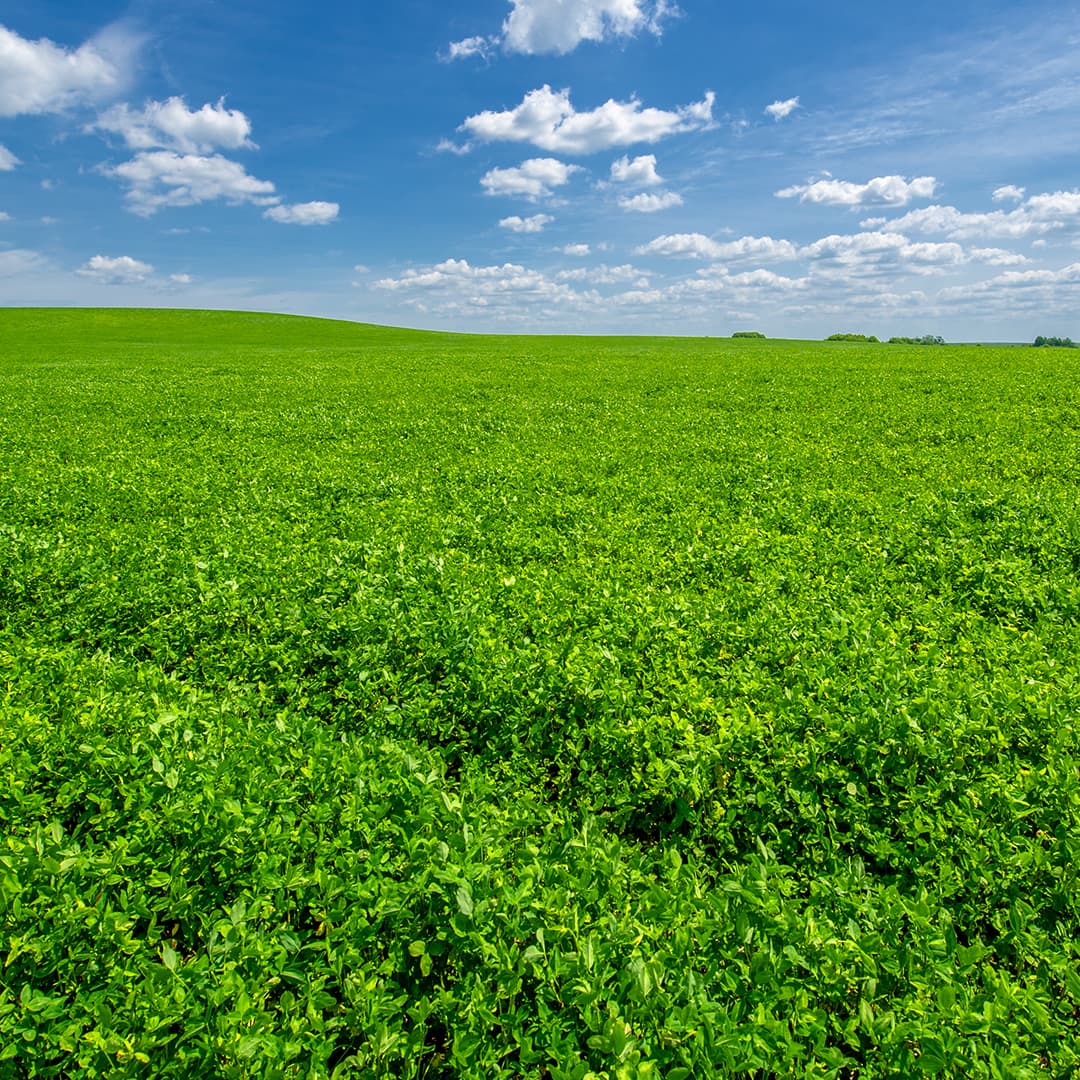Whereas host plant resistance has long been an effective tool for managing economic losses to important crop diseases, insects and nematodes, the effectiveness of genes conferring such resistance can be overcome with the evolution of new races of these pests. There are many examples for this in other crops (e.g. stem rust in wheat), but fortunately there have been relatively few examples of this in alfalfa.
There are two important alfalfa pathogens where the evolution of new races has overcome first generation host plant resistance: anthracnose and Aphanomyces root rot. It should not be a surprise that in recent years new races of both pathogens have been identified, and that alfalfa breeders have been working on identifying new sources of resistance and incorporating those characteristics into new experimental varieties.
Aphanomyces
Aphanomyces root rot Race 1 was first identified as an alfalfa pathogen in the mid 1980s, and a new Race 2 was identified less than a decade later. Resistance to Race 2 (Aph2) also conferred resistance to Race 1 and this trait has been widely incorporated into commercial cultivars. A 2015 report from the University of Wisconsin (Sietz and Rouse, 20151) warned that in some soils Aph2 resistance was not providing sufficient protection against economic losses. They identified several new Aphanomyces isolates and a check variety (WAPH5) with resistance to these more virulent isolates. They suggested these new isolates were typical of a new Race 3 Aphanomyces (Aph3) pathogen.
In the Aphanomyces resistance breeding project at FGI, we have traditionally used a blend of isolates we have collected from various sources and regions of the country. As a result, we have had some Aph3 resistance in most of our newer breeding lines. Since 2014, we have switched to using the University of Wisconsin “Siletz Aph3 strains” for selection, and now have excellent resistance (greater than WAPH5) to Aph3 in most of our new Conventional, Roundup Ready® alfalfa and HarvXtra® alfalfa breeding populations and experimental varieties.
There currently is no NAAIC (North American Alfalfa Improvement Conference) approved Aph3 standard test. Our experience suggests that the University of Wisconsin line APH5 is an excellent candidate for a resistant standard check, but that ideal inoculation and incubation conditions for Aph3 are somewhat different than for Aph1 or Aph2. Our current ratings on Aph3 resistance are based on our proprietary lab techniques and using WAPH5 as a resistant check.
The development of Aphanomyces root rot disease in the field is favored by cool wet soil conditions and our West Salem, WI testing location had such “ideal” conditions in both 2016 and 2017. In multiple trials across both years the Aph3 resistant entries exceeded our testing protocols and we saw a significant increase in forage yield in 2nd year stands of Aph3 resistant entries as compared to Aph2 resistant entries. We believe resistance to Aph3 will become a new standard for winterhardy varieties adapted to the Midwest and Northeast, and we are now evaluating these types in the Pacific northwest, where Aph2 is a common problem.
Anthracnose
When anthracnose was first identified as a significant alfalfa pathogen in the early 1970s, the USDA began a full scale research effort to develop a resistant cultivar. The variety Arc, released in 1977, was the result of this effort, and several other anthracnose resistant public (Saranac AR) and propriety varieties were release soon thereafter. Race 2 anthracnose (An2) was identified in the mid-Atlantic states in the early 1980s, and Saranac AR was identified as a resistance source and new resistant check.
In early 2014 FGI scientists noticed low level anthracnose infection (“shepherd crook” phenotype) on experimental varieties and commercial cultivars with high resistance to An1 and An2. Since this was the first such observation, we cultured anthracnose isolates from lesions of infected plants, and immediately began testing this new isolate against An1 and An2 standard checks and our most elite germplasm. The new isolate annihilated all current entries we tested, and we immediately started a massive screening program to identify sources of resistance. Dr. Deborah Samac USDA/ARS at the University of Minnesota confirmed this was a new race and suggested we label it as Race 5 anthracnose (An5).
There currently is no NAAIC approved An5 standard test, although we are working on this now in cooperation with Dr. Samac. We have developed an excellent candidate for a resistant standard check. We know that that ideal inoculation and incubation conditions for An5 is significantly different than for An1 or An2. Our current ratings on An5 resistance are based on FGI proprietary lab techniques and using our new proposed resistant check.
We now have good resistance to An5 in most of our Conventional, Roundup Ready® alfalfa and HarvXtra® alfalfa breeding populations, and in some of our newer experimental varieties. In FGI trials at West Salem, WI, Boone, IA and Mt Joy, PA An5 resistant experimental varieties were higher yielding than all other entries in the trials, and An5 resistant plots were without anthracnose symptoms, whereas there were abundant infected plants late in the season in other entries at all three locations. AN5 is a very virulent alfalfa pathogen. At West Salem An5 resistant varieties are yielding more than 20% higher than similar varieties without An5 resistance. We will be including An5 resistance in all of our winterhardy breeding populations (Conventional Roundup Ready® alfalfa and HarvXtra® alfalfa) and future products adapted to the Midwest and Northeast.

The photo above was taken in August 2017 in an August 2015 seeded forage yield trial at West Salem, WI. The commercial check cultivar in the center is resistant to An1 and Aph2. The experimental varieties adjacent on both sides combine resistance to An5 and Aph3. In this trial we noted significant Aphanomyces damage in fall 2015, and spring 2016; and notable anthracnose symptoms and damage were noted in cuts 3-4 in both 2016 and 2017.
1https://www.naaic.org/conf/files/P34-Seitz.pdf



